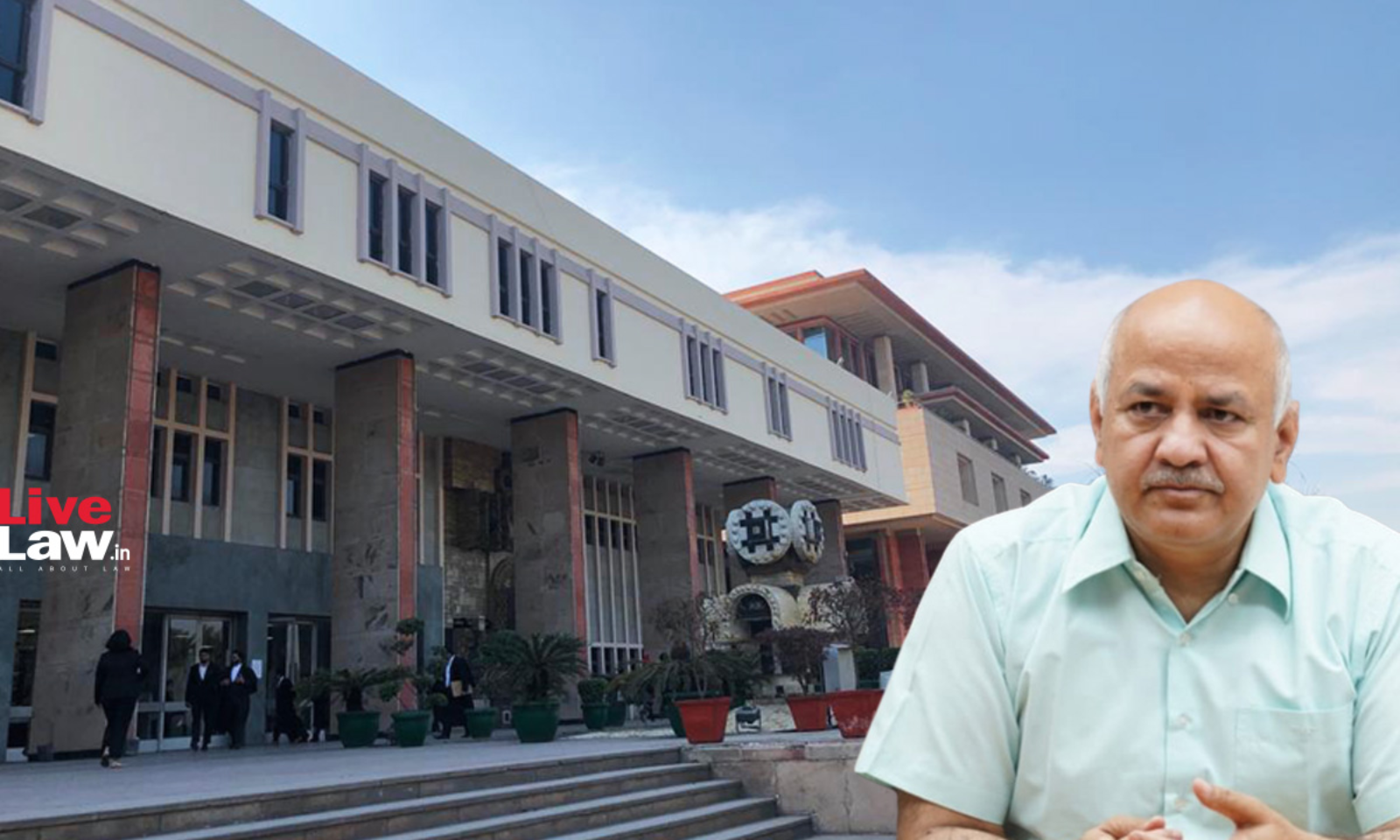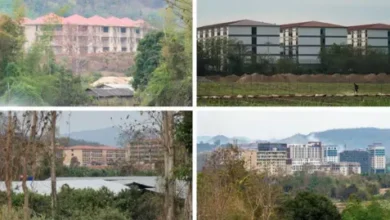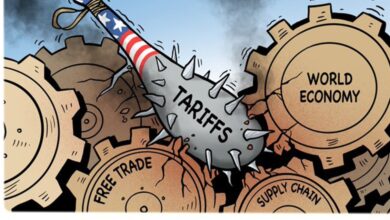‘Where is the evidence?’ Supreme Court asks ED to establish money trail implicating Manish Sisodia in Delhi liquor ‘scam’

‘Where is the evidence?’ Supreme Court asks ED to establish money trail implicating Manish Sisodia in Delhi liquor ‘scam’
The Supreme Court has cast doubt on the case brought forth by the Enforcement Directorate (ED) against Aam Aadmi Party (AAP) leader Manish Sisodia in connection with the Delhi excise policy case. The court has raised significant questions about the evidence presented by the ED and the establishment of charges under the Prevention of Money Laundering Act (PMLA).
The ED had arrested Manish Sisodia on March 9, 2023, following his initial custody by the Central Bureau of Investigation (CBI) on February 26, 2023. The legal proceedings surrounding this case have garnered attention due to the involvement of a prominent political figure.
Key points to note regarding the Supreme Court’s stance on this matter:
- Evidence Scrutiny: The Supreme Court has expressed skepticism about the sufficiency and admissibility of the evidence presented by the Enforcement Directorate. To establish charges under the PMLA, it is crucial that the evidence is robust and meets the legal standards required for such cases.
- Importance of Strong Evidence: The court’s emphasis on the necessity of strong evidence underscores the importance of due process and adherence to legal procedures in cases of this nature. Charges under the PMLA involve serious allegations, and the burden of proof lies with the prosecuting agency.
- Legal Scrutiny: The case has entered a phase of legal scrutiny, with the Supreme Court playing a crucial role in assessing the merit and validity of the charges against Manish Sisodia. The court’s involvement ensures that justice is served impartially and in accordance with the law.
- Custody Period: The timeline of events, including Sisodia’s initial custody by the CBI and subsequent arrest by the ED, has led to legal and procedural questions. The court will likely evaluate the circumstances surrounding these actions.
- Political Implications: Given Manish Sisodia’s political stature as a leader of the Aam Aadmi Party, the case has political implications. The legal proceedings will be closely watched by various stakeholders.
During the hearing of Manish Sisodia’s bail plea in the Supreme Court, the bench led by Justice Sanjiv Khanna and Justice S V Bhatti raised important questions regarding the evidence presented by the Enforcement Directorate (ED) to establish charges of money laundering against Sisodia. Additional Solicitor General S V Raju, who represented both the ED and the Central Bureau of Investigation (CBI) in the case, was questioned by the bench.
The central focus of the court’s inquiry was whether the ED possessed any evidence beyond the statement of a co-accused who had become an approver. This line of questioning highlights the need for substantial and corroborative evidence when pursuing money laundering charges under the Prevention of Money Laundering Act (PMLA).
Key points regarding the court’s inquiry:
- Evidence Apart from Co-Accused’s Statement: The court sought to ascertain whether the ED had any independent evidence or corroborating material to substantiate the charges of money laundering against Manish Sisodia. Relying solely on the statement of a co-accused-turned-approver may raise questions about the reliability and credibility of the evidence.
- Legal Scrutiny: The court’s scrutiny of the evidence underscores the principle of due process and the importance of a strong case when pursuing serious criminal charges. This ensures that individuals are not unduly deprived of their liberty without substantial evidence.
- Implications for the Case: The court’s questions and the examination of the evidence have potential implications for the case against Manish Sisodia. The strength of the evidence presented by the prosecution can significantly influence the outcome of the bail plea and the broader legal proceedings.
- Role of the Bench: The bench’s role in questioning the prosecution’s case reflects the judiciary’s commitment to upholding the rule of law and ensuring a fair and just legal process. The court’s inquiry contributes to transparency and accountability in the legal system.
The Supreme Court, during the hearing of Manish Sisodia’s bail plea, delved into the issue of evidence presented by the Enforcement Directorate (ED) in the Delhi excise policy case. Justice Sanjiv Khanna, presiding over the bench along with Justice S V Bhatti, posed critical questions to Additional Solicitor General S V Raju, who represented the ED and CBI in the case.
The questions and observations made by the bench regarding the evidence and the alleged money flow from the liquor group include:
- Lack of Evidence Apart from Statement: Justice Khanna questioned whether the ED had any evidence apart from the statement of Dinesh Arora, who was also involved in the case. The court’s focus on this issue emphasizes the need for corroborative and independent evidence in establishing charges of money laundering.
- Money Flow: The bench noted that, according to the ED’s case, no money had directly come to Manish Sisodia. It sought clarification on how the money purportedly flowed from the liquor group. The court pointed out that there could be multiple individuals or entities involved in financial transactions, and the mere presence of a large sum of money does not necessarily implicate any specific person.
- Establishing the Chain: Justice Khanna stressed the importance of establishing a clear chain of events and financial transactions. He acknowledged the challenges in doing so, given the covert nature of such activities, but emphasized the responsibility of the prosecution to establish this chain.
- Competence of the Prosecution: The bench acknowledged the difficulty in tracing money flows in cases involving covert activities and expressed the belief that the competence of the ED would be pivotal in addressing these challenges and presenting a strong case.

The exchange in court between Additional Solicitor General S V Raju and Justice Sanjiv Khanna continued to revolve around the chain of evidence and the establishment of charges against Manish Sisodia in the money laundering case. Key points from this exchange include:
- Establishing the Chain: Raju maintained that the prosecution had established the chain of events through statements and corroborating evidence. However, Justice Khanna persisted in questioning the veracity of the evidence and specifically asked for corroboration regarding whether the money was indeed paid by the liquor group.
- Direct Involvement of Sisodia: Justice Khanna noted that it did not appear that Manish Sisodia was directly involved in the transactions related to the money laundering case. He sought clarification from the ED on how they intended to bring Sisodia under the ambit of the Prevention of Money Laundering Act (PMLA).
- Co-Accused’s Presence: Justice Khanna pointed out that while a co-accused, Vijay Nair, was mentioned in the proceedings, there seemed to be a lack of direct involvement or evidence linking Manish Sisodia to the alleged money laundering activities.
- Sisodia’s Role: Raju argued that Sisodia played a crucial role in generating the money that subsequently became the proceeds of crime. This argument implies that Sisodia’s involvement is indirect but significant in the context of the case.
The courtroom exchange underscores the court’s rigorous scrutiny of the prosecution’s case against Manish Sisodia. The court seeks to ensure that charges under the PMLA are based on strong and verifiable evidence, and it is evaluating whether there is a direct link between Sisodia and the alleged money laundering activities. The proceedings reflect the judiciary’s commitment to upholding due process and ensuring a fair legal process in high-profile cases like this one.
The courtroom exchange continued with Additional Solicitor General S V Raju presenting arguments to establish a connection between Manish Sisodia and the money laundering case. Key points from this part of the discussion include:
- AAP Connection: Raju argued that Manish Sisodia is connected to the Aam Aadmi Party (AAP) and that they had a role to play in the Delhi excise policy even before it was officially released. This suggests that the prosecution believes Sisodia had a role in shaping the policy, which is relevant to the case.
- Money Trail: The bench questioned the prosecution about the money trail and its connection to Sisodia. It highlighted the importance of demonstrating a direct or indirect link between Sisodia and the proceeds of crime for the case to hold.
- Vicarious Liability: The bench also noted the concept of vicarious liability, indicating that if the money was going to a company with which Sisodia was involved, it could imply his liability. However, it emphasized that such a connection must be established for the prosecution’s case to hold.
- PMLA Scope: Justice Khanna clarified the scope of the Prevention of Money Laundering Act (PMLA), emphasizing that it deals with activities connected to the proceeds of crime, not the mere generation of funds. This distinction underscores the legal standards required to invoke the PMLA.
- Abetment and Conspiracy: The bench raised questions about whether abetment or conspiracy could be part of the PMLA and emphasized the need to establish a connection between the person concerned and the proceeds of crime for the act to be applicable.

The courtroom discussion underscores the legal intricacies and complexities surrounding the case against Manish Sisodia. The bench’s focus on establishing a clear link between Sisodia and the alleged money laundering activities highlights the importance of evidence and due process in such high-profile cases. The court’s inquiry ensures a rigorous evaluation of the prosecution’s case and adherence to legal standards.




